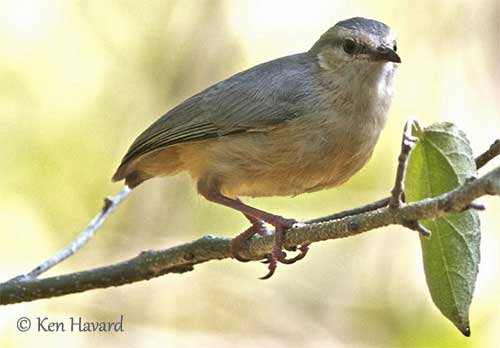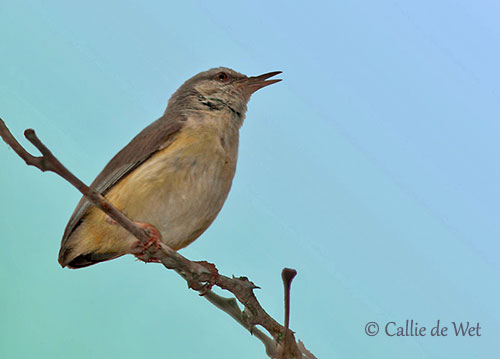
Fr: Crombec à long bec
Ang: Long-billed Crombec
All: Langschnabelsylvietta
Esp: Crombec Piquilargo
Ita: Crombec del Capo
Nd: Kaapse Krombek
Sd: långnäbbad krombek
Photographers:
Didier Buysse
Vision d’Oiseaux
Callie de Wet
GALLERY
Ken Havard
My Bird Gallery & Flickr gallery 1 & Flickr gallery 2
Text by Nicole Bouglouan
Sources:
HANDBOOK OF THE BIRDS OF THE WORLD Vol 11 by Josep del Hoyo, Andrew Elliott and David Christie - Lynx Edicions - ISBN: 849655306X
BIRDS OF AFRICA SOUTH OF THE SAHARA by Ian Sinclair and Peter Ryan - Princeton University Press Princeton and Oxford - ISBN: 0691118159
Biodiversity Explorer – The Web of Life in Southern Africa
CREAGUS@Monterey Bay (Don Roberson)
Wikipedia, the free encyclopaedia
Long-billed Crombec
Sylvietta rufescens
Passeriformes Order – Macrosphenidae Family
INTRODUCTION:
The Long-billed Crombec is a bulky, almost tailless African warbler. It belongs to the new family Macrosphenidae that includes most of the species formerly placed in the family Sylviidae, the Old World warblers, after a series of molecular studies. This species has the longest bill of all the crombecs in South Africa.
The Long-billed Crombec is sedentary in its wide African range from DRCongo, Zambia and Tanzania, S to South Africa. It frequents woodlands, savanna and scrublands.
It is uncommon in the northern range, and common in the south. The population is currently stable and not globally threatened.

DESCRIPTION OF THE BIRD:
Biometrics:
Length: 10-11 cm
Weight: 9-14 g
The Long-billed Crombec of nominate race has brownish-grey upperparts with pale edges to upperwing feathers. The underparts are cinnamon-buff.
On the head, forehead, crown, nape and ear-coverts are brownish-grey, whereas cheeks, chin and throat are buffy-white. There is a creamy-white supercilium and a dark grey eye stripe.
The fairly long bill is blackish-brown and the length varies geographically. The eyes are light brown. Legs and feet are pinkish-brown to flesh-pink.
Male and female are similar.
The juvenile is slightly paler rufous below.
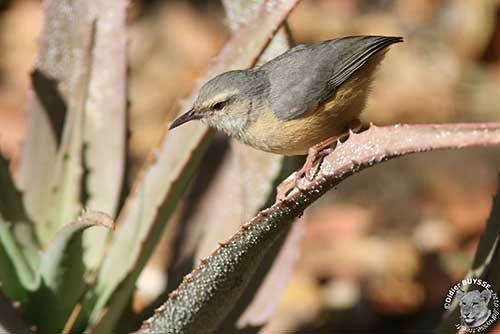
SUBSPECIES AND RANGE:
The Long-billed Crombec has seven subspecies that vary mainly in bill length and colour intensity. The northern races show paler plumage and shorter bill, while the southern ones are darker with longer bill.
S.r. ansorgei: coastal Angola. It is browner above with white supercilium and throat.
S.r. adelphe: SE DRCongo, W Burundi, Zambia (except SW), and N Malawi. This one is smaller with paler underparts.
S.r. flecki: S Angola, Namibia (except S), SW Zambia, Botswana, Zimbabwe plateau and N South Africa (Northern Province). This race is paler grey, less brownish than nominate and paler below.
S.r. pallida: SE Zambia, S Malawi, N and E Zimbabwe, Mozambique and NE South Africa. This one is similar to “flecki” but with whiter face, paler underparts with only cinnamon wash, and smaller bill.
S.r. rufescens (described above): S Namibia, S and SW Botswana, NW and N South Africa.
S.r. diverga: C and S South Africa and Lesotho. This race is darker than nominate on the upperparts, and warm cinnamon below.
S.r. resurga: E South Africa and Swaziland. This one is like “diverga” but with more bluish-grey upperparts.
HABITAT:
The Long-billed Crombec frequents arid savanna, mixed-species woodland with thick undergrowth, gardens, Acacia thickets and scrub, open mopane woodland (Colophospermum mopane).
It is usually seen at lower elevations, below 1500 metres in Malawi, but up to 2000 metres in DRCongo.
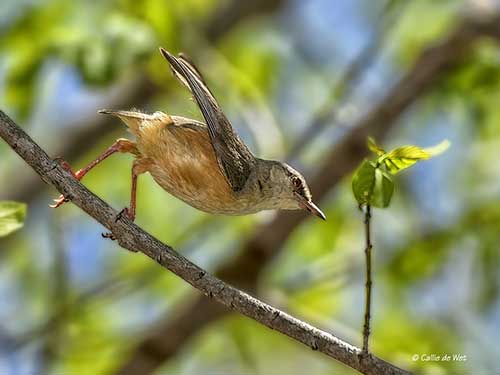
CALLS AND SONGS : SOUNDS BY XENO-CANTO
The Long-billed Crombec regularly gives dry, rolling contact call “prrit-prrit”. The song is a loud, high whistle “tree-rrit, tree-rrit” or “tree reee rit” repeated several times.
BEHAVIOUR IN THE WILD:
The Long-billed Crombec feeds mainly on insects, ticks (Acarina) and grass seeds. Insects include mantids, beetles and caterpillars.
It forages carefully in bushes and trees from bottom to top of the vegetation. It gets the food from twigs and leaves, trunks and branches, and moves by hopping easily.
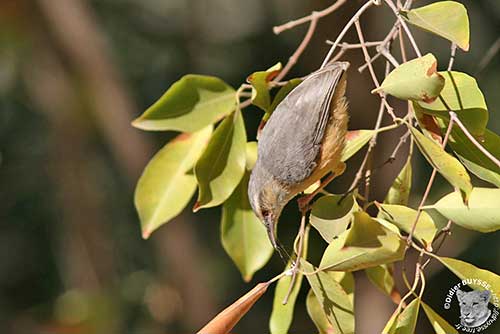
The breeding season coincides with the end of the dry season and the beginning of the rainy period, involving insect abundance.
The African warblers are usually territorial and monogamous. More information is needed.
The Long-billed Crombec is sedentary with some movements at the edges of the range.
This species performs bouncing flight.
REPRODUCTION OF THIS SPECIES:
The breeding season varies according to the range, and usually takes place between September and April, with some variations.
The nest is a strong, deep hanging bag suspended from a slender outer branch of tree or thornbush. It is made with plant stems, grasses and plant fibers. A layer of spider web binds the materials together. There is an aperture near the top. The cavity is lined with finer plant material. The nest is decorated outside with bits of leaf, bark, pieces of wood, seeds, cocoons and pupae, probably as camouflage. It is usually less than one metre above the ground.
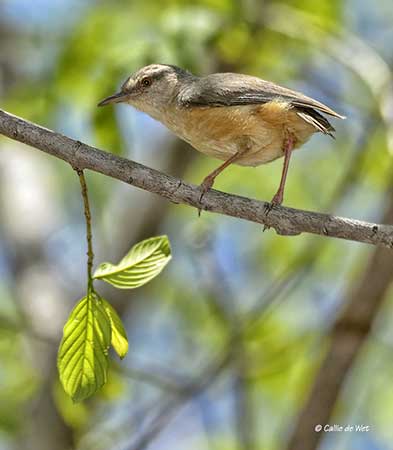
The female lays 1-3 white eggs and both adults incubate during about two weeks. The chicks are fed by their parents. They leave the nest two weeks after hatching, and are independent 10 days later.
The nest is often parasitized by Klaas’s Cuckoo.
PROTECTION / THREATS / STATUS:
The Long-billed Crombec is usually uncommon in N of range and common in South. The population size is unknown, but it is suspected to be stable.
The Long-billed Crombec is currently evaluated as Least Concern.
